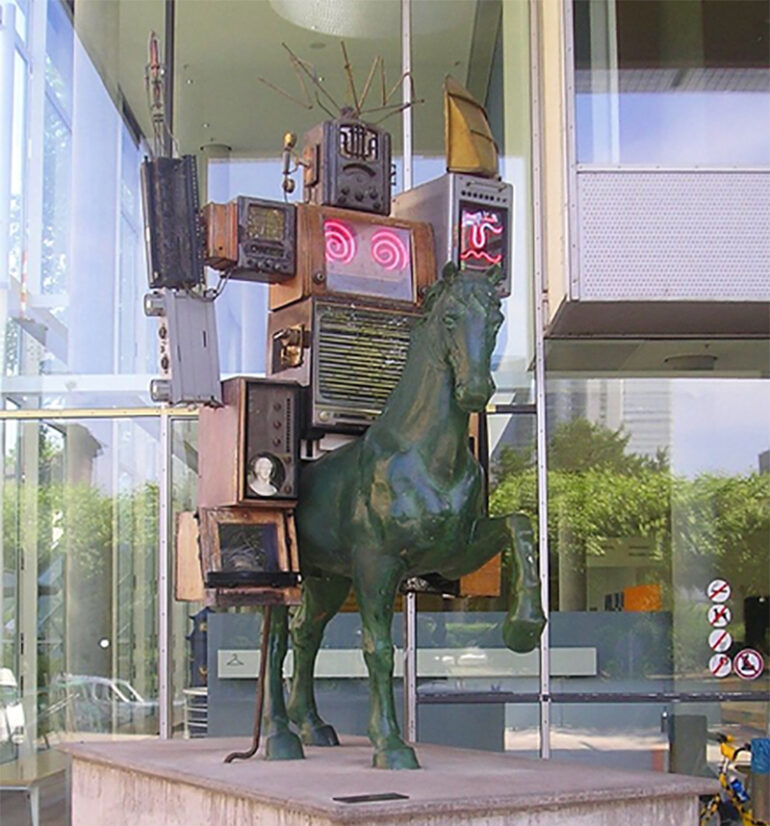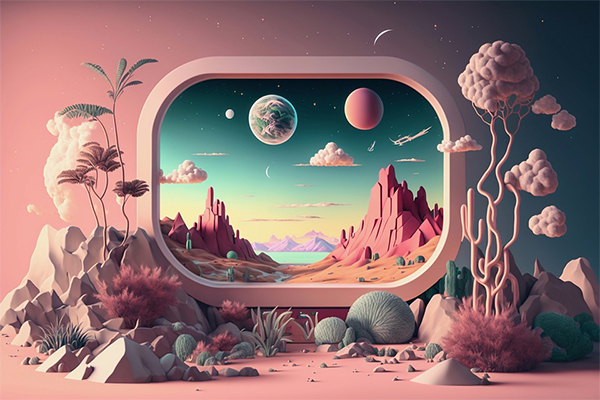Technology, art, and culture are explored in the fast-developing field of new media art. Virtual reality, augmented reality, interactive installations, video art, and internet art are just a few examples of the enormous variety of artistic techniques under this umbrella. It can engage viewers in novel and interesting ways and defies conventional ideas of what art may be.
New media art arose as artists started experimenting with electronic media and computer technologies in the 1960s. Nam June Paik, a Korean-American artist commonly considered the father of video art, was one of the movement’s pioneers. His work included video monitors, televisions, and other electrical gadgets to construct multimedia works that addressed the link between technology and culture.
Since then, new media art has developed and grown as artists have used digital tools to produce immersive, interactive, and frequently surprising works. One example is augmented reality, a technology that superimposes digital material on the actual environment. A new method to experience art in public areas has been made possible by artists like Koo Jeong-A and Tamiko Thiel, who have employed augmented reality to create site-specific works that combine the real and virtual worlds.
Another tool that new media artists have embraced is virtual reality. With the help of this immersive technology, viewers may enter a wholly digital world and engage with art in a totally new way. Using technology to provide spectators with vivid and emotional experiences, artists like Rachel Rossin and Jakob Kudsk Steensen have produced virtual reality works that explore topics like identity, memory, and the environment.
Net art, sometimes called online art, is a subgenre of new media art that employs the internet as a medium for artistic expression. Using social networking sites, YouTube, and other online tools, net artists like Cory Arcangel and Petra Cortright have utilized the internet to produce works that subvert conventional ideas of art and authorship. These works are frequently funny, sarcastic, or provocative.
The potential of new media art to connect viewers in novel and creative ways is one of its most fascinating aspects. For instance, the distinction between the artist and the audience is muddled in interactive exhibits that enable spectators to actively participate in creating the work. Rafael Lozano-Hemmer, for instance, uses sensors and other technology to create installations that respond to the viewer’s motions and activities, engaging the audience in conversation with the piece of art.
By utilizing technology to increase awareness and start debates about climate change, social justice, and human rights, new media art can also solve significant social and political challenges. Using photography, film, and other media to analyze the covert processes that influence our environment, artist Trevor Paglen’s works, for instance, tackle subjects like surveillance and privacy.
To sum up, new media art is a dynamic and fascinating discipline that keeps expanding the possibilities of what art may be. New media artists use digital tools to produce works that go against conventional ideas of what art is. They engage audiences in fresh and creative ways and deal with significant political and social topics. As technology develops, new media art will undoubtedly continue to impact the cultural landscape of the future.
Photo Attribution:
1st and featured image from https://en.wikipedia.org/wiki/Nam_June_Paik#/media/File:Frankfurt_Medien_Denkmal.jpg
2nd image from https://pixabay.com/illustrations/yberspace-landscape-virtual-reality-7760396/

